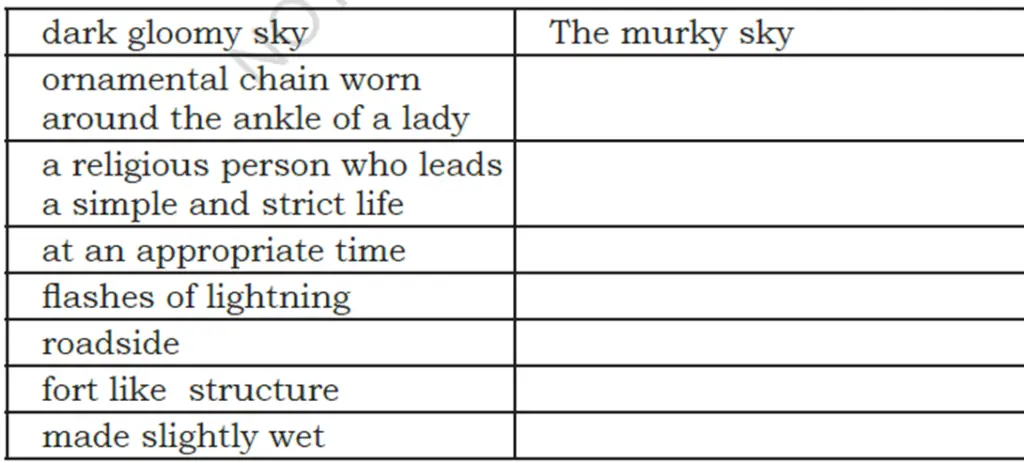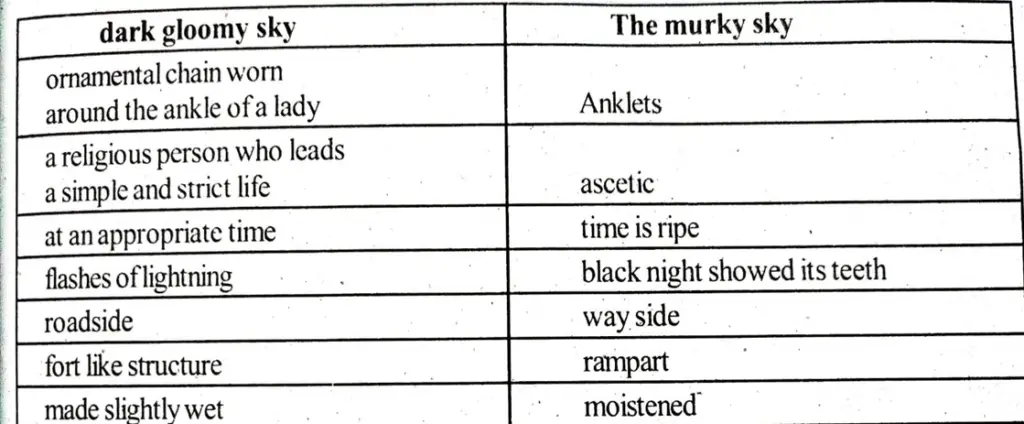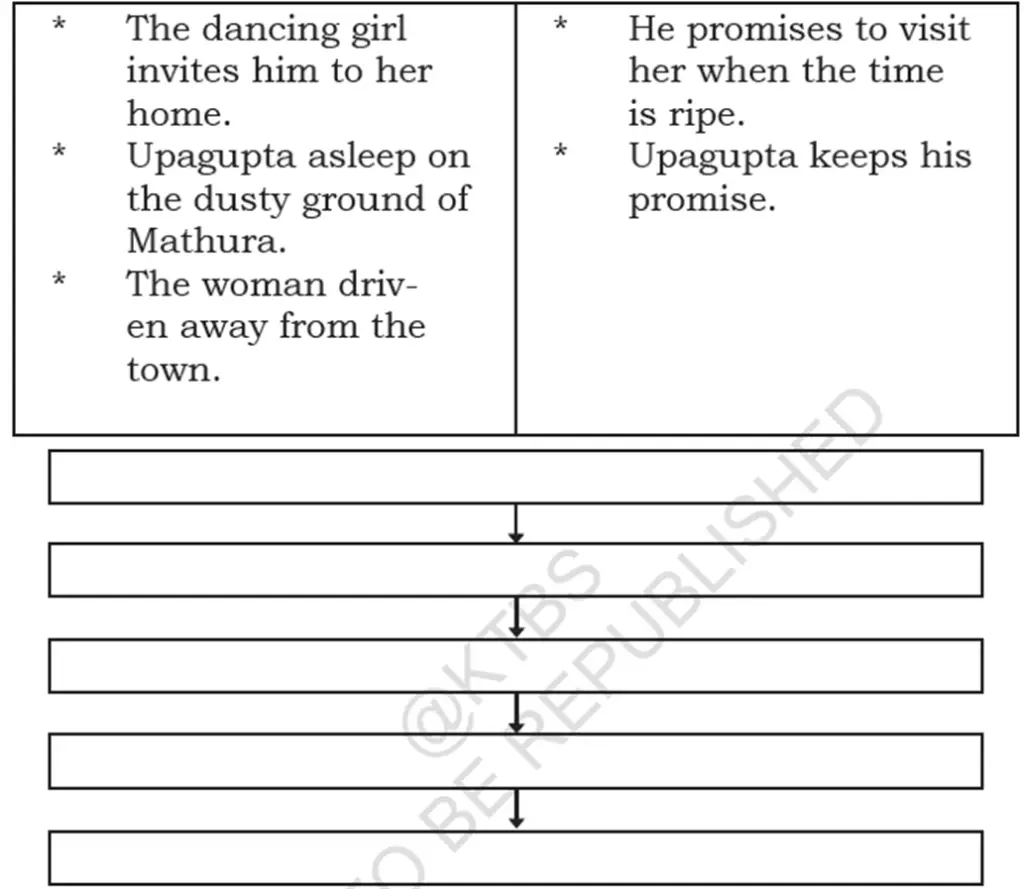Understand the Poem
C1. Work in pairs. Pick out the words/phrases from the poem which tell you about the following. Write them in the space given. One is done for you.

Ans:

C2. The important signposts of the poem are given in the box. Fill in the flowchart in the order in which the incidents occur.

Ans:-

C3. Some qualities of Upagupta are given. Quote the appropriate lines from the poem to justify them. One is done for you.

Ans:-

C4. Work in small groups. Complete the summary of the poem with suitable words given in the bubbles.
Upagupta a ———— of Buddha, goes from one place to another. Once while he is sleeping in a small town called ——-———, a dancing girl wakes him up and ————————— him to her home.
Upagupta ——————, but tells her, “I will visit you when the time is ———————————
A year later, Upagupta finds the dancing girl lying on the ground ————— the town, having sores all over the body . She is driven away from the ———.He gives her —— and applies —— on her body. The woman asks who he is. Upagupta replies, “Now the —— has come to visit you and I am here”.

Ans:-

Read and Appreciate
R1. Read and discuss your responses with your partner. Then write.
1. Why did Upagupta wake up startled?
Ans:-Upagupta lay asleep on the dusty ground woke up startled because Vasavadatta’s feet touched his breast.
2. “The dancing girl was rich.” Do you agree with this opinion? Justify your answer by quoting from the text.
Ans:-yes, I will agree with this statement. She was starred with Jewels and anklets.
3. Why do you think the ascetic did not accept the invitation of the dancing girl?
Ans:-Ascetic being a disciple of Buddha, had some restrictions. He is not going to anybody’s house. So he did not accept the invitation of the dancing girl.
4 How is the spring season described in the poem?
Ans:-In the spring season the branches of the roadside were full of flowers and happy notes (sounds) of the flute came like floating in the warm spring air.
5. “The time, at last, has come to visit you.” What do you understand by this?
Ans:-Whenever the woman need help, that is the right time to ascetic to come and help her. She was in helpless condition. The line tells us that when the persons are in helplessness, the true ascetic should help them.
6. Read the last stanza. Does the de- scription suggest anything about the ascetic?
Ans:-Yes. He was very kind and generous. He was remembered her not seeing her physical body but knowing her soul.
R2. Imagery is the use of language to evoke pictures in the minds of the readers or listeners. Sit in pairs, identify the images used in the poem and write them down.
e.g., 1. Upagupta sleeping on the dusty ground
1. murky sky of August.
2. those tinkling with anklets touching his breast.
3. He woke up startled, and the light from woman’s lamp.
4. The dancing girl, starred with Jewels, wearning a pale blue mantle, drunk with the wine of her youth.
5. She lowered her lamp and saw the young face austerely beautiful.
6. The black night showled its teeth and woman trembled in fear.
7. Spring season, gay notes of the flute…
8. Upagupta stood at the base of rampart.
9. Woman lying at his feet in the shadow of the mango tree.
10. Upagupta moistened her lips with water and smeared her body with sandal balm.